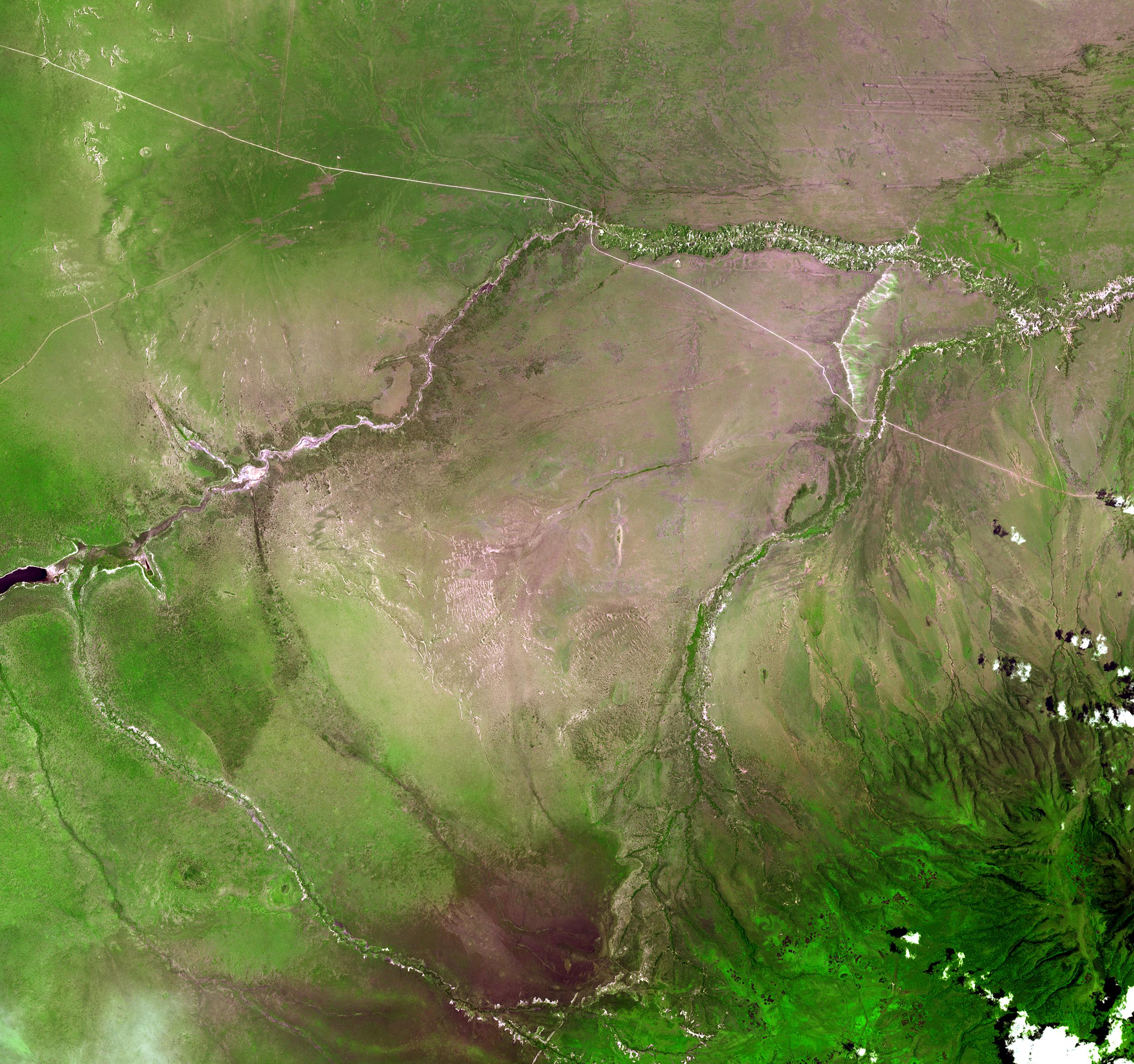|
Primate Archaeology
Primate archaeology is a field of research established in 2008 that combines research interests and foci from primatology and archaeology. The main aim of primate archaeology is to study behavior of extant and extinct primates and the associated material records. The discipline attempts to move beyond archaeology's anthropocentric perspective by placing the focus on both past and present primate tool use. Primate archaeology is characterized by the combination of archaeological and primatological methods, and researchers consider both non-human primate tools and their behaviour in tandem.Carvalho, S. and Almeida-Warren, K., (2019). Primate archaeology. In ''Encyclopedia of animal behavior''. Academic Press, 397–407. Primate archaeology has the unique opportunity to observe the tool-use behaviors of extant non-human primates and the formation of the material record that emerges from that behavior. It is this ability to observe behavior and the subsequent material Deposition (geolog ... [...More Info...] [...Related Items...] OR: [Wikipedia] [Google] [Baidu] |
Primatology
Primatology is the scientific study of primates. It is a diverse discipline at the boundary between mammalogy and anthropology, and researchers can be found in academic departments of anatomy, anthropology, biology, medicine, psychology, veterinary sciences and zoology, as well as in animal sanctuaries, biomedical research facilities, museums and zoos. Primatologists study both living and extinct primates in their natural habitats and in laboratories by conducting field studies and experiments in order to understand aspects of their evolution and behavior. Sub-disciplines As a science, primatology has many different sub-disciplines which vary in terms of theoretical and methodological approaches to the subject used in researching extant primates and their extinct ancestors. There are two main centers of primatology, Western primatology and Japanese primatology. These two divergent disciplines stem from the unique cultural backgrounds and philosophies that went into their fou ... [...More Info...] [...Related Items...] OR: [Wikipedia] [Google] [Baidu] |
Oligocene
The Oligocene ( ) is a geologic epoch of the Paleogene Period and extends from about 33.9 million to 23 million years before the present ( to ). As with other older geologic periods, the rock beds that define the epoch are well identified but the exact dates of the start and end of the epoch are slightly uncertain. The name Oligocene was coined in 1854 by the German paleontologist Heinrich Ernst Beyrich from his studies of marine beds in Belgium and Germany. The name comes from the Ancient Greek (''olígos'', "few") and (''kainós'', "new"), and refers to the sparsity of extant forms of molluscs. The Oligocene is preceded by the Eocene Epoch and is followed by the Miocene The Miocene ( ) is the first geological epoch of the Neogene Period and extends from about (Ma). The Miocene was named by Scottish geologist Charles Lyell; the name comes from the Greek words (', "less") and (', "new") and means "less recent" ... Epoch. The Oligocene is the third and final epoch of ... [...More Info...] [...Related Items...] OR: [Wikipedia] [Google] [Baidu] |
OH 7
OH 7 (Olduvai Hominid № 7), also nicknamed "Johnny's Child", is the type specimen of ''Homo habilis''. The fossils were discovered on November 4, 1960 in Olduvai Gorge, Tanzania, by Jonathan and Mary Leakey. The remains are dated to approximately 1.75 million years, and consist of fragmented parts of a lower mandible (which still holds thirteen teeth, as well as unerupted wisdom teeth), an isolated maxillary molar, two parietal bones, and twenty-one finger, hand, and wrist bones. The OH 7 hand is wide, with a large thumb and broad fingertips, similar to that of humans; however, unlike in humans the fingers are relatively long and exhibit chimpanzee-like curvature. Furthermore, the thumb's orientation relative to the other fingers resembles the anatomy of great apes. The parietal bones — a nearly complete left parietal and fragmented right parietal — were used to deduce the cranial capacity of the hominid, which was placed at 663 cc in account of the fact that the fossils bel ... [...More Info...] [...Related Items...] OR: [Wikipedia] [Google] [Baidu] |
Fossil
A fossil (from Classical Latin , ) is any preserved remains, impression, or trace of any once-living thing from a past geological age. Examples include bones, shells, exoskeletons, stone imprints of animals or microbes, objects preserved in amber, hair, petrified wood and DNA remnants. The totality of fossils is known as the ''fossil record''. Paleontology is the study of fossils: their age, method of formation, and evolutionary significance. Specimens are usually considered to be fossils if they are over 10,000 years old. The oldest fossils are around 3.48 billion years old to 4.1 billion years old. Early edition, published online before print. The observation in the 19th century that certain fossils were associated with certain rock strata led to the recognition of a geological timescale and the relative ages of different fossils. The development of radiometric dating techniques in the early 20th century allowed scientists to quantitatively measure the abs ... [...More Info...] [...Related Items...] OR: [Wikipedia] [Google] [Baidu] |
Paranthropus Boisei
''Paranthropus boisei'' is a species of australopithecine from the Early Pleistocene of East Africa about 2.5 to 1.15 million years ago. The holotype specimen, OH 5, was discovered by palaeoanthropologist Mary Leakey in 1959, and described by her husband Louis a month later. It was originally placed into its own genus as "''Zinjanthropus boisei''", but is now relegated to ''Paranthropus'' along with other robust australopithecines. However, it is also argued that ''Paranthropus'' is an invalid grouping and synonymous with ''Australopithecus'', so the species is also often classified as ''Australopithecus boisei''. Robust australopithecines are characterised by heavily built skulls capable of producing high stresses and bite forces, and some of the largest molars with the thickest enamel of any known ape. ''P. boisei'' is the most robust of this group. Brain size was about , similar to other australopithecines. Some skulls are markedly smaller than others, which is tak ... [...More Info...] [...Related Items...] OR: [Wikipedia] [Google] [Baidu] |
Oldowan
The Oldowan (or Mode I) was a widespread stone tool archaeological industry (style) in prehistory. These early tools were simple, usually made with one or a few flakes chipped off with another stone. Oldowan tools were used during the Lower Paleolithic period, 2.6 million years ago up until at least 1.7 million years ago, by ancient Hominins (early humans) across much of Africa. This technological industry was followed by the more sophisticated Acheulean industry (two sites associated with ''Homo erectus'' at Gona in the Afar Region of Ethiopia dating from 1.5 and 1.26 million years ago have both Oldowan and Acheulean tools). The term ''Oldowan'' is taken from the site of Olduvai Gorge in Tanzania, where the first Oldowan stone tools were discovered by the archaeologist Louis Leakey in the 1930s. However, some contemporary archaeologists and palaeoanthropologists prefer to use the term ''Mode 1'' tools to designate pebble tool industries (including Oldowan), with ''Mode 2' ... [...More Info...] [...Related Items...] OR: [Wikipedia] [Google] [Baidu] |
Olduvai Gorge
The Olduvai Gorge or Oldupai Gorge in Tanzania is one of the most important paleoanthropological localities in the world; the many sites exposed by the gorge have proven invaluable in furthering understanding of early human evolution. A steep-sided ravine in the Great Rift Valley that stretches across East Africa, it is about long, and is located in the eastern Serengeti Plains within the Ngorongoro Conservation Area in the Olbalbal ward located in Ngorongoro District of Arusha Region, about from Laetoli, another important archaeological locality of early human occupation. The British/Kenyan paleoanthropologist-archeologist team of Mary and Louis Leakey established excavation and research programs at Olduvai Gorge that achieved great advances in human knowledge and are world-renowned. The site is registered as one of the National Historic Sites of Tanzania. The gorge takes its name from the Maasai word ''oldupai'' which means "the place of the wild sisal" as the East A ... [...More Info...] [...Related Items...] OR: [Wikipedia] [Google] [Baidu] |
Louis Leakey
Louis Seymour Bazett Leakey (7 August 1903 – 1 October 1972) was a Kenyan-British palaeoanthropologist and archaeologist whose work was important in demonstrating that humans evolved in Africa, particularly through discoveries made at Olduvai Gorge with his wife, fellow palaeoanthropologist Mary Leakey. Having established a programme of palaeoanthropological inquiry in eastern Africa, he also motivated many future generations to continue this scholarly work. Several members of the Leakey family became prominent scholars themselves. Another of Leakey's legacies stems from his role in fostering field research of primates in their natural habitats, which he saw as key to understanding human evolution. He personally focused on three female researchers, Jane Goodall, Dian Fossey, and Birutė Galdikas, calling them The Trimates. Each went on to become an important scholar in the field of primatology. Leakey also encouraged and supported many other PhD candidates, most notabl ... [...More Info...] [...Related Items...] OR: [Wikipedia] [Google] [Baidu] |
Acheulean
Acheulean (; also Acheulian and Mode II), from the French ''acheuléen'' after the type site of Saint-Acheul, is an archaeological industry of stone tool manufacture characterized by the distinctive oval and pear-shaped " hand axes" associated with ''Homo erectus'' and derived species such as '' Homo heidelbergensis''. Acheulean tools were produced during the Lower Palaeolithic era across Africa and much of West Asia, South Asia, East Asia and Europe, and are typically found with ''Homo erectus'' remains. It is thought that Acheulean technologies first developed about 1.76 million years ago, derived from the more primitive Oldowan technology associated with ''Homo habilis''. The Acheulean includes at least the early part of the Middle Paleolithic. Its end is not well defined, depending on whether Sangoan (also known as "Epi-Acheulean") is included, it may be taken to last until as late as 130,000 years ago. In Europe and Western Asia, early Neanderthals adopted Acheul ... [...More Info...] [...Related Items...] OR: [Wikipedia] [Google] [Baidu] |
Abbevillian
Abbevillian (formerly also ''Chellean'') is a term for the oldest lithic industry found in Europe, dated to between roughly 600,000 and 400,000 years ago. The original artifacts were collected from road construction sites on the Somme river near Abbeville by a French customs officer, Boucher de Perthes. He published his findings in 1836. Subsequently, Louis Laurent Gabriel de Mortillet (1821–1898), professor of prehistoric anthropology at the School of Anthropology in Paris, published (1882) "''Le Prehistorique, antiquité de l'homme''", in which he was the first to characterize periods by the name of a site. Chellean included artifacts discovered at the town of Chelles, a suburb of Paris. They are similar to those found at Abbeville. Later anthropologists substituted Abbevillian for Chellean, the latter of which is no longer in use. Abbevillian tool users were the first archaic humans in Europe, classified as either late Homo erectus as Homo antecessor or as Homo heidelb ... [...More Info...] [...Related Items...] OR: [Wikipedia] [Google] [Baidu] |
OH 7 Replica 01
Oh, OH, or Oh! is an interjection, often proclaiming surprise. It may refer to: Arts and entertainment Music Albums * ''Oh!'' (Girls' Generation album), 2010 * ''Oh!'' (ScoLoHoFo album), 2003 * ''OH (ohio)'', by Lambchop, 2008 * ''Oh!'', an EP that came with the preorders of ''Oh! Gravity.'' by Switchfoot, 2006 Songs * "O (Oh!)", 1920 by Ted Lewis, 1953 by Pee Wee Hunt * "Oh" (Ciara song), 2005 * "Oh!" (Girls' Generation song), 2010 * "Oh!" (Pink Lady song), 1981 * "Oh" (Stray Kids song), 2021 * "Oh!", by Boys Noize from '' Oi Oi Oi'' * "Oh!", by The Breeders from ''Pod'' * "Oh", by Dave Matthews from ''Some Devil'' * "Oh", by Fugazi from ''The Argument'' * "Oh", by Juliana Hatfield from ''Made in China'' * "Oh!", by Micky Green from ''White T-Shirt'' * "Oh!", by Sleater-Kinney from ''One Beat'' * "Oh", by Spratleys Japs from ''Pony'' * "Oh!", by The Trudy * "Oh," by Underworld, recorded for the soundtrack to A Life Less Ordinary, 1997 Other media * Oh! (TV channel), an ... [...More Info...] [...Related Items...] OR: [Wikipedia] [Google] [Baidu] |







